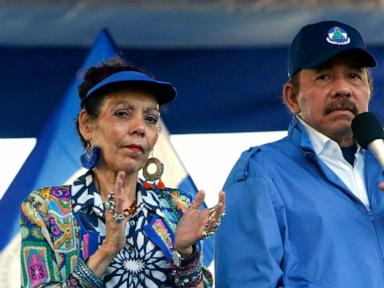ARTICLE AD BOX
The next major Ethereum upgrade, called Fusaka, a hybrid of “Fulu” (consensus) and “Osaka” (execution), will modify how the network handles data and fees without altering the primary user experience.
Beneath the surface, it’s a statement of direction: Ethereum’s main chain is staying the final settlement and data-availability hub, while everyday activity continues to flow outward onto cheaper, faster rollups.
The open question, which is whether Fusaka will bring users back to Layer 1, already has its answer. It won’t. It will make Layer 2 even harder to leave.
Inside Fusaka: scaling the plumbing, smoothing the ride
The technical backbone of Fusaka centers on data availability, sampling, and blob management, which is Ethereum’s approach to making Layer 2 posting cheaper and more efficient. The headline proposal, EIP-7594 (PeerDAS), lets nodes sample only fragments of rollup data, called “blobs”, instead of downloading everything.
That unlocks higher blob capacity and drastically lowers bandwidth costs for validators, a prerequisite for scaling L2 throughput.
Then comes EIP-7892, introducing “Blob Parameter-Only” forks, or BPOs, a mechanism to gradually increase the number of blobs per block (for instance, from 10 to 14, or 15 to 21) without rewriting the protocol.
This effectively lets developers tune Ethereum’s data capacity without waiting for complete upgrades. EIP-7918 sets a base-fee floor for blobs, ensuring the auction price for data space doesn’t collapse to near zero during low demand.
The rest of the bundle focuses on user experience and safety. EIP-7951 adds support for secp256r1, the cryptographic curve used in WebAuthn, making passkey logins possible across Ethereum wallets. EIP-7917 introduces deterministic proposer look-ahead, a small but significant change that helps pre-confirmation systems predict who will produce the next block, enabling faster transaction assurance.
Meanwhile, EIP-7825 caps transaction gas to prevent denial-of-service risks, and EIP-7935 adjusts default block gas targets to maintain validator stability.
These upgrades are already live on testnets like Holesky and Sepolia, with a mainnet activation expected in early December.
Why Fusaka matters for fees and the rollup economy
For users, Fusaka doesn’t promise cheaper Layer 1 gas. It’s built to lower Layer 2 fees. By allowing rollups to post more data at lower cost, the upgrade improves the economics for networks like Arbitrum, Optimism, Base, and zkSync.
Internal modeling suggests that rollup fees could fall between 15% and 40% under typical conditions, possibly even up to 60% if blob supply outpaces demand for an extended period. On the Ethereum mainnet, gas prices may remain roughly flat, although future adjustments to block gas targets could reduce them by another 10-20%.
The passkey and proposer updates, however, could make a difference in how Ethereum feels to use. With WebAuthn support, wallets can integrate biometric or device-based logins, removing the friction of seed phrases and passwords. With pre-confirmations enabled by predictable proposer schedules, users can expect near-instant confirmations for routine transactions, especially on rollups.
The net result is that Ethereum becomes smoother to use without pulling anyone back to L1. The rails get faster, but they’re still pointed toward the rollup lane.
L1 as settlement, L2 as experience
Ethereum’s architecture is no longer a debate between monolithic and modular design: it’s modular by choice. Layer 1’s purpose is to serve as the high-security settlement and data availability base, while actual user activity is moved to Layer 2.
Fusaka reinforces this split. When blob capacity increases, L2s can handle higher throughput for games, social apps, and micro-transactions that would be uneconomical on mainnet. The improvements to login and confirmation workflows make these L2 environments feel native and instantaneous, erasing much of the UX gap that once favored L1.
Where might users still choose Layer 1? In narrow cases, it involves high-value settlements, institution-scale transfers, or situations where block-ordering precision is crucial, such as miner extractable value (MEV) management or DeFi clearing. But those scenarios represent a small fraction of total on-chain activity. For the rest, L2 remains the natural home.
The bigger narrative: Ethereum as a layered internet
Viewed from above, Fusaka is less about gas optimization and more about maturity. It gives Ethereum a scalable framework for adjusting data capacity (BPOs) without disruptive forks, and a UX layer that makes Web3 feel more like Web2.
Yet its philosophy is clear: the network isn’t trying to centralize traffic on mainnet. It’s building an expressway system where rollups handle local traffic, and L1 serves as the courthouse where everything eventually gets notarized.
There’s also a monetary layer to the story. Cheaper data posting could drive a wave of new low-value applications, like social, payments, and gaming, back into rollups. Each of these still consumes ETH through blob fees, and with EIP-7918’s fee floor, those fees contribute to ETH burn. Ethereum’s burn rate could even tick higher if activity expands faster than fees decline, despite cheaper user costs.
On the validator side, PeerDAS lightens the load on bandwidth but may create a new reliance on “supernodes” that store full blob data. That’s a decentralization trade-off the community will continue to debate: how to scale data availability without narrowing participation.
The balance Ethereum is striking here, between throughput, usability, and trust, mirrors the broader direction of crypto infrastructure. L1s are hardening into secure bases, while L2s absorb experimentation and scale.
The takeaway
Fusaka isn’t a bid to reclaim the spotlight for the Ethereum mainnet. It’s the opposite: a deliberate move to strengthen the foundations for a rollup-centric future.
The upgrade expands data capacity, stabilizes fees, and modernizes wallet experience, but it does so in service of the layers above. Ethereum’s L1 becomes safer and smarter, while users continue to live on L2s that now run cheaper and faster than before.
By the time BPO1 and BPO2 roll out early next year, the real signals to watch will be blob utilization versus capacity, L2 fee compression, and wallet adoption of passkeys. The outcome will define how frictionless Ethereum feels in 2026, not by pulling people back to the main chain, but by making the off-ramps almost invisible.
The post Will Fusaka keep users on L2? Upcoming Ethereum upgrade eyes up to 60% fee cuts appeared first on CryptoSlate.
.png)
 4 hours ago
2
4 hours ago
2








 English (US)
English (US)